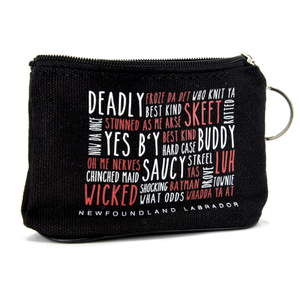By Lester Green
I spent many hours captivated by the ancestral history recorded in Mom’s collection of “snaps.” The photograph of a submarine fastened to the pier at St. John’s waterfront would cause my imagination to go into overdrive. Questions floated in my head. When and where was this taken? Who owned the submarine? Did we have relatives serving that this U-boat sank? Why did my Mom take this iconic photo?
When confronted with these inquisitive questions of my youthful mind, Mom’s response would always be: “That’s a German U-boat that was captured and brought into St. John’s near the end of the war.”
With this simple explanation, my curiosity would be satisfied, though I’d continue shuffling through other intriguing snaps that helped compile our family history.
After Mom’s passing in 2004 and my retirement in 2011, I began digitalizing her collection. When I held the snap of the German U-boat, my curiosity peaked again. What was Mom doing in St. John’s during the war? Why did she take this photo? Why were all the people gathered on the waterfront?
Mom, Olive (Jacobs) Green, was the daughter of David and Alice Jacobs, born in the small fishing outport of Little Heart’s Ease, where the Salvation Army arrived in 1932. Mom was seven when she attended the Army Citadel on the Hill, where she would become a junior soldier. She received a certificate of merit from the Army in 1942. Shortly after, she went into service with the Salvation Army at St. John’s.
After I retired to our parent’s home, my family visited, and the old photos would become a focal point of discussion. The conversation would turn to various photos, including the submarine and others showing Mom’s life in the city. The snap of Mom knitting on the roof of a St. John’s building would generate discussions of her love of knitting. We would discuss Mom’s employment as a teenager “in-service” with the Salvation Army.
The photo of the submarine, however, would continue to puzzle us. Why did Mom take this snap? What was the story behind this historic snap? I had to seek out the answers. My curiosity had to be satisfied.
Researching the internet and posting on social media soon brought a maze of articles, newspaper clippings, and photos that helped solve the mystery of the “submarine snap.” The mystery submarine was indeed a German submarine known as U-190. I was soon to learn the intriguing history behind this U-boat.
The submarine had conducted several operational patrols and was responsible for sinking two Allied vessels. On March 8, 1943, U-190 raised its periscope about 500 miles off Cape Farewell, Greenland. It spotted an unescorted freighter that had strayed from its convoy en route from New York to Glasgow, England. Under its master, Fredrick John Gudgin, the British cargo ship Empire Lakeland was now in the crosshairs of U-190. The submarine discharged its torpedoes, and within minutes, the merchant vessel slipped below the surface, taking all 64 sailors to their watery graves. The submarine continued under the same commander and made other operational patrols. The U-190 discharged its torpedoes several times but was unsuccessful at sinking other ships.
On February 22, 1945, under a new German commander, Oberleutnant Hans-Edwin Reith, U-190 left the submarine base in Norway on its sixth and final voyage. Its mission was to interrupt allied shipping off Sable Island and the approaches to Halifax harbour.
The action of U-190 on April 16, 1945, would place submarine into the Canadian history books. That morning, the minesweeper HMCS Esquimalt was conducting its daily routine patrol. The ship failed to follow naval procedures to evade enemy submarines. The naval inquiry would later determine that the ship failed to employ the zig-zagging pattern, it was not towing the Foxer-type decoy designed as a countermeasure to torpedoes, and the ship’s radar was turned off.
That morning, the commander of U-190 was convinced that HMCS Esquimalt had detected the submarine. When the minesweeper turned around, U-190 fired a torpedo that struck the doomed ship, and the HMCS Esquimalt slipped below the surface within minutes, taking eight crew members to their deaths. The vessel also failed to radio a distress signal while waiting for a rescue vessel, and forty-four more crew died of exposure. Only 26 members were rescued by the HMCS Sarnia.
U-190 escaped and continued to evade detection, hunting for other vessels off the Canadian and Newfoundland coast until it received orders from the German command to surrender.
Unlike my Mom’s explanation, this U-boat was not captured but surrendered to the Royal Canadian Navy off Cape Race on May 11, 1945, to the HMCS Victoriaville. She was then escorted to Bay Bulls, where the crew members were removed, sent to Halifax for interrogation and held as prisoners of war. The Royal Canadian Navy escorted U-190 from Bay Bulls to St. John’s harbour, where she remained at the waterfront until repairs were completed.
While anchored at the pier in St. John’s harbour, the submarine had its periscope removed and placed at the officer club known as the Crow’s Nest. If you visit the Crow’s Nest today, one could observe the periscope and a brass clock removed from U-190.
The Canadian navy sailed the vessel to Halifax, where the U-boat served as a training vessel for a year and a half. On July 24, 1947, U-190 was taken to the exact location where the HMCS Esquimalt was torpedoed two years earlier. The German submarine that had caused terror by lurking beneath the waters along the eastern seaboard was fired upon by the Canadian Navy and sank into the sea.
We will never know if Mom realized the significance of the snap that captured the image of U-190 and had the foresight to preserve the image in her family album. Mom returned to her to Little Heart’s Ease and married William Green in 1949. The family believes Mom was unaware that U-190 was scuttled where the HMCS Esquimalt met its doom.
Carefully, I placed the photo back into Mom’s album and was reminded that Mom lived through troublesome times as a teenager. She had witnessed and photographed U-190, a German submarine feared by Canadians and Newfoundlanders during the war’s final months.
The story captured and preserved in this image reminds us that every photo has a story. This one reminds us that schooners and other vessels that sailed the waters around Newfoundland and Labrador’s coast were in constant danger of U-boats lurking below the surface.
I recently visited the Crow’s Nest, where the periscope and other mementos taken from U-190 are permanently displayed. As I stood by the periscope, a vision of my Mom appeared in my mind. She was holding the snap and telling those who would listen to her story about the submarine secured to the St. John’s waterfront wharf.
Thanks, Mom. This photo and the many others you preserved have become part of our family’s legacy.









